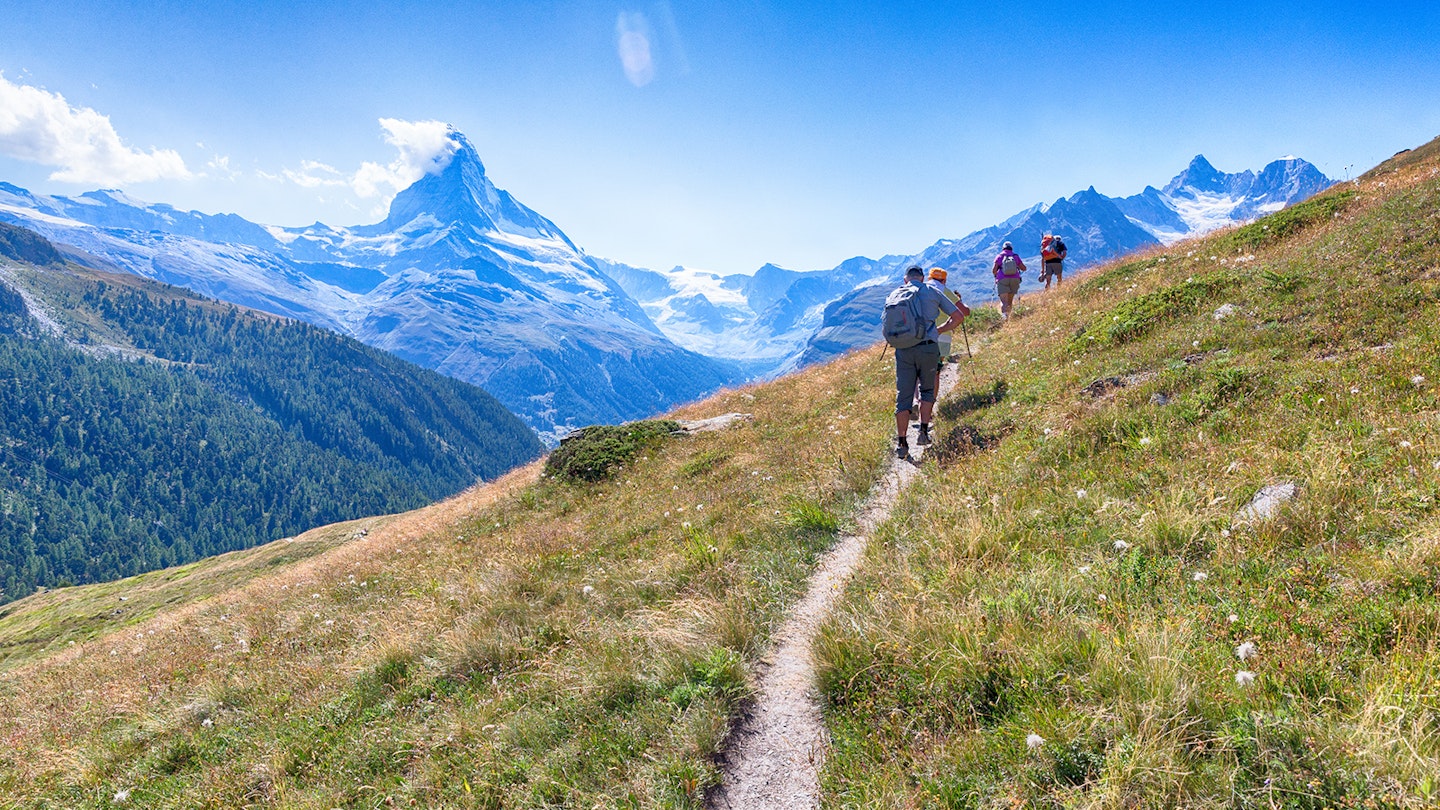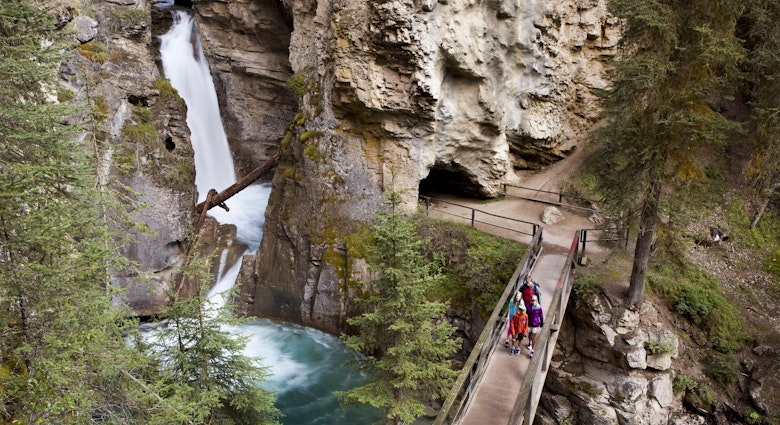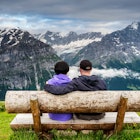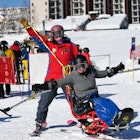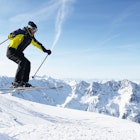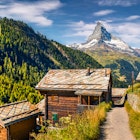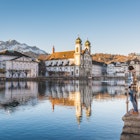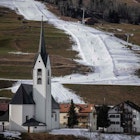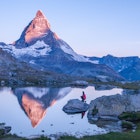Nature had one of her finest moments in Switzerland. Where else can you find such varied and intense beauty – colossal glaciers, raging falls, hidden valleys and 4000m mountains – in such a small country?
On foot or skis, by bike or raft, with karabiner or paraglider, the Swiss have harnessed these wild places with impeccable precision. And no matter how ‘switched-on’ life gets, this will always be a land where you can find adventure and solitude.
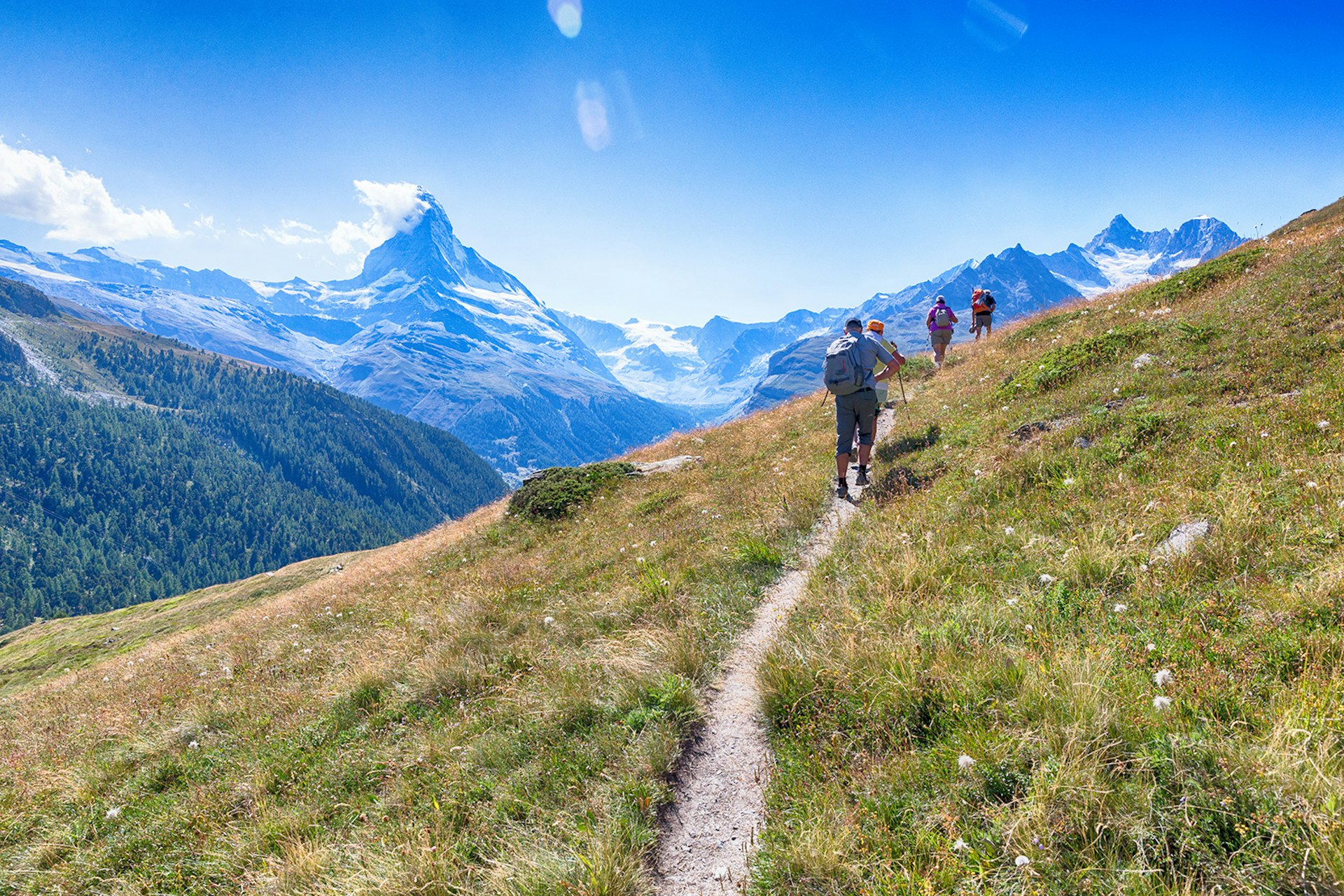
On a high in Valais
Nothing says Switzerland more than that mountain. As the train chugs from Täsch to the ritzy outdoor resort of Zermatt, the pop-up effect of the Matterhorn is surreal. The 4478m fang of rock and ice forces your gaze skywards and elicits gasps of wonder.
Closer, you say? Kein problem. The Gornergratbahn, Europe’s highest cogwheel railway, has been trundling up to Gornergrat (3089m) since 1898. At the summit, the view of the Gorner Glacier and 29 peaks rising above 4000m – including Switzerland’s highest, Dufourspitze (4634m) – opens up. Skiers, mountaineers and hardcore hikers are in their element at Matterhorn Glacier Paradise, Europe’s highest cable-car station on the Klein Matterhorn (3883m), with views reaching deep into the Swiss, French and Italian Alps.
Ever since British climber Edward Whymper made the first successful ascent of the Matterhorn in 1865 – albeit a triumph marred by rope-breaking tragedy – Zermatt has been the Holy Grail for mountaineers. Here you can tackle some of Europe’s most epic ascents: the Matterhorn, say, or Monte Rosa (4634m), with an Alpine Center guide. Hikers, meanwhile, can set out along the two-hour, 6.5km Matterhorn Glacier Trail. When the flakes fall in winter, the car-free resort is laced with 360km of ski runs in the Matterhorn’s shadow, some of which dip over the border into Italy.

Among alpine giants
The Matterhorn gets a lot of love, but swing north and follow the Rhône River east along the serene, remote valley of the Goms in Valais and you enter another world. Here tiny hamlets with baroque churches and sun-blackened chalets are dwarfed by the dramatic backdrop. From Fiesch, take the cable car up to Fiescheralp, where paragliders catch thermals on clear days, then beyond to Eggishorn for one of Switzerland’s most unforgettable sights: the mighty Aletsch Glacier.
The icing on the cake of the Unesco World Heritage Jungfrau-Aletsch region, this is the longest and most voluminous glacier in the Alps: a 23km swirl of deeply crevassed ice that powers its way past waterfalls, spires of rock and the dagger-shaped summit of Aletschhorn (4193m) like a six-lane glacial superhighway. You can admire it from the viewpoint, but you’ll get much closer on the 17km, five- to six-hour hike from Fiescheralp to Bettmeralp, which is where you can be at one with the phenomenal views and perhaps spot the odd Valais blacknose sheep. For more of an instant thrill, walk (if you dare) the Aletschji–Grünsee Suspension Bridge, which spans the terrifyingly untamed, 80m-deep Massa Gorge.
Over the mountain as the crow flies lies the Bernese Oberland, presided over by its ‘big three’: Eiger, Mönch and Jungfrau (Ogre, Monk and Virgin), all hovering around the 4000m mark. The picture-perfect resorts of Grindelwald, Wengen and Mürren are great bases for hitting trails like the 6km Eiger Trail, with fearsome North Face views. More spectacular still, the full-day, 15.9km trek from Schynige Platte plateau via Faulhorn to First has views of lakes Thun and Brienz to make you yodel out loud. Or enjoy knockout peak and glacier views with zero effort by taking the train from Kleine Scheidegg up to 3454m Jungfraujoch, Europe’s highest railway station.
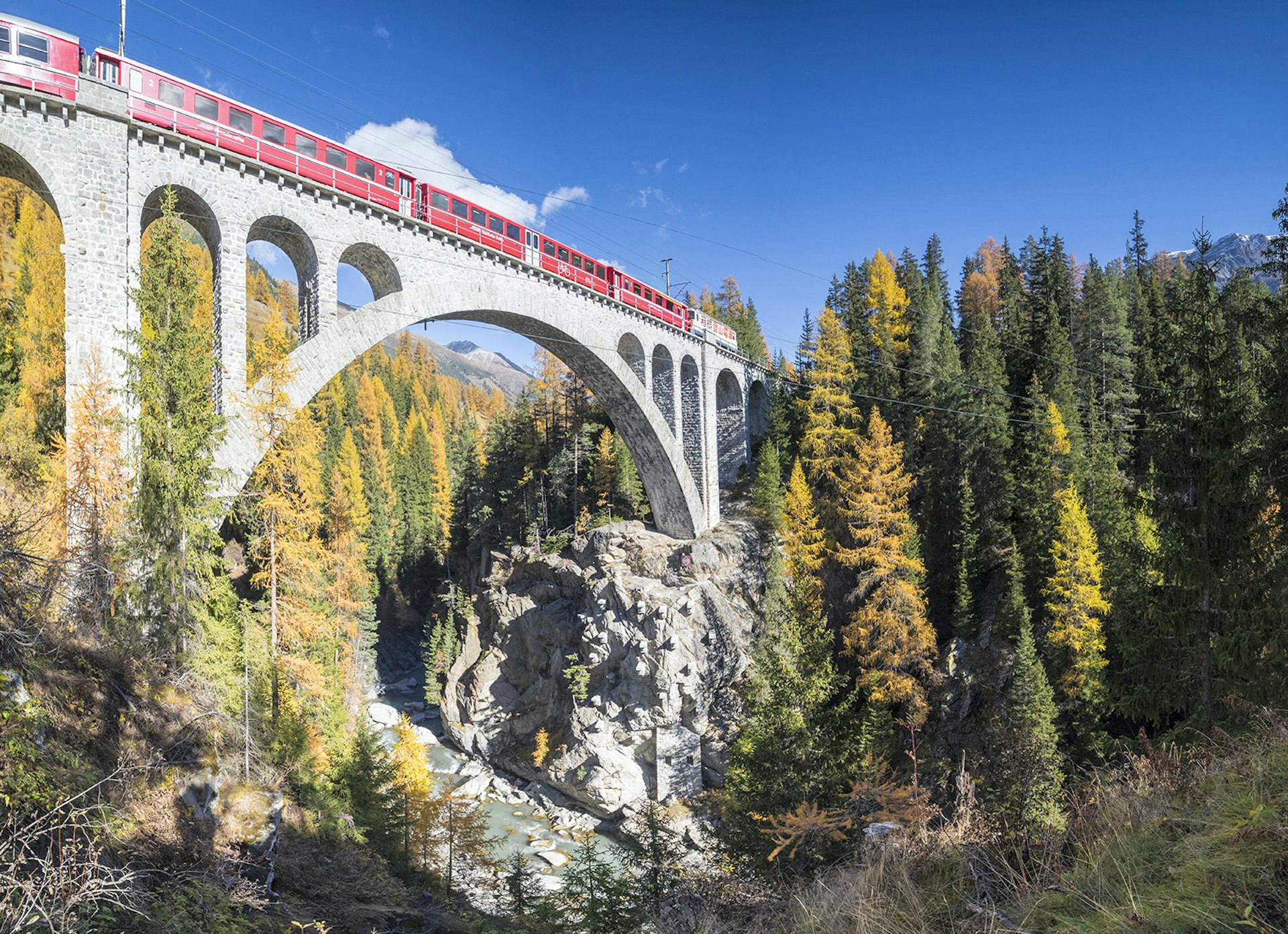
Into the Engadin
Evocative of a golden age of travel, Switzerland’s train journeys are some of the world’s finest. There are big mountain views on repeat aboard the Glacier Express, which negotiates the Furka, Oberalp and Bernina passes on the eight-hour ride between Zermatt and St Moritz in Graubünden’s Upper Engadin.
Switzerland’s cradle of winter tourism since the mid 19th century, St Moritz is enshrined in sporting legend, home to slopes of Olympic fame and host to world championship events. Skiing ramps things up a notch in winter, with 350km of pistes, first-class freeriding opportunities, forested cross-country trails and heart-stopping black runs on 2978m Diavolezza.
The resort is every bit as alluring in summer. Hiking trails thread for mile after lovely mile, mountain bikers are in their element on 400km of terrain – the Suvretta Loop single trail is a classic – and wind- and kite-surfers drift across Silvaplana’s startlingly turquoise, wind-buffeted lakes in wonder.
For a taste of the Alps before the dawn of tourism, head northeast to the Swiss National Park in the Lower Engadin. Easily accessed from the quaint villages of Scuol, Zernez and S-chanf, Switzerland’s only national park is a nature-gone-wild spectacle of high moors, pastures, glaciated mountains, larch woodlands and topaz-coloured lakes. The only way to see it is by striking out on foot on one of 80km of marked trails. Go solo or hook onto a guided walk with the visitor centre in Zernez. With an expert in tow, you stand better chances of spotting rarities like wild edelweiss, ibex, chamois, golden eagles and bearded vultures.

Land of lakes & legends
Sitting on the mountain-rimmed shores of its eponymous lake, Lucerne, with its pristine Old Town, medieval wooden bridge and promenade, is every inch as genteel as it was back in the 19th century when Goethe, Wagner and Queen Victoria fell for its charms. And Lake Lucerne is no ordinary lake: this is where the Swiss legends were made and born. Cruise the fjord-like waters of Lake Uri and you’ll glimpse Rütli Meadow, hallowed birthplace of the Swiss Confederation in 1291, and the Tells’ Chapel, where apple-shooting hero and Swiss rebel William Tell apparently escaped from the boat of his Hapsburg captor, Gessler.
Lucerne itself is a cracking base for striking out into the surrounding lakes on low-key adventures. Without venturing too far or expending too much effort, you can marvel at the Alps cycling the trails rimming the waterfront, taking a refreshing dip at lakefront beaches in the warmer months, or hiring a boat to explore Lake Lucerne at your own steam.
The mountains that rear above Lucerne and its lake are the stuff of myth. Green peaks seem to ripple into infinity from 2128m Mt Pilatus, where the restless ghost of Roman prefect Pontius Pilate is said to roam. Reached by the world’s steepest cog railway, the mountain has walking trails commanding views as far as Germany’s Black Forest on cloudless days. Its rival in the beauty stakes is 1797m Mt Rigi, famous for its magical sunrises and sunsets.
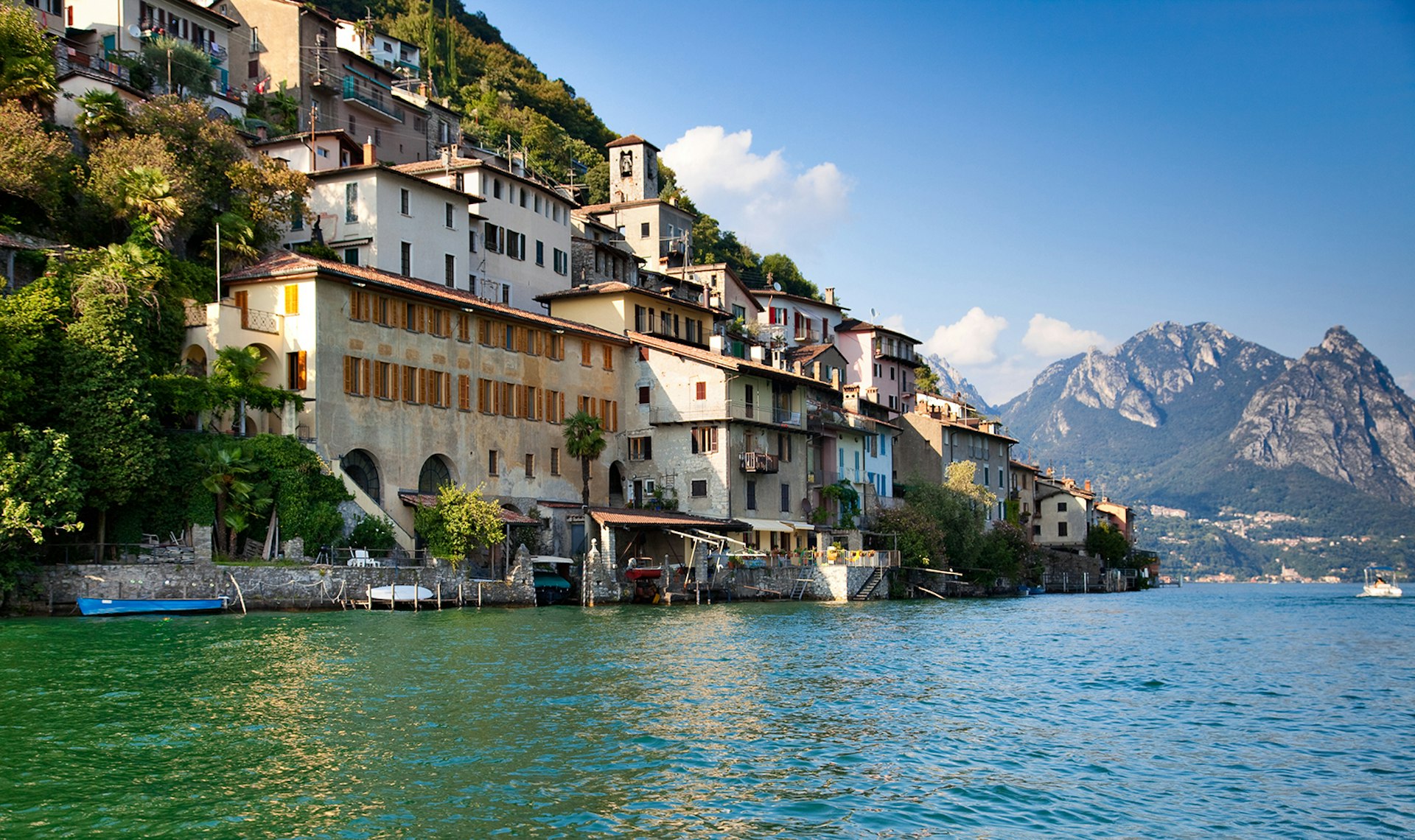
Little Italy, Switzerland style
Lakes are a defining feature of the Swiss landscape, but they take on a very different quality in the southern Italian-speaking canton of Ticino, where pines give way to palms. South of the fortified town of Bellinzona, topped by a trio of Unesco-listed medieval castles, mountains tumble down to the shores of lakes where the water is warm enough to swim. Baroque campaniles chime in waterfront towns and stylish cities with Italian flair: Locarno, Lugano and Ascona included.
Lago di Lugano looks sublime from the boats that ply the lake, but 1701m Monte Generoso gives a great overview from above. Reached by a rack-and-pinion railway, it affords a broad vista of the Alps and Apennines and is crowned by a Mario Botta-designed visitor centre resembling a giant stone flower. For more expansive views over the lakes and into the Alps, take a funicular above Lugano to Monte San Salvatore or Monte Brè.
Beyond the lakes the real appeal lies in Ticino’s hidden valleys, where streams of dazzling blue burble past chestnut woods and granite hamlets pasted onto hillsides, and rustic taverns called grotti dish up polenta and brasato (beef braised in red wine) with local Merlot. The Valle Maggia is particularly beloved of mountain bikers and hikers, with 700km of trails to explore, including the challenging, 52km, six-day Via Alta, showcasing the region’s best.
If after all that you’re still craving adventure, get yourself over to the rugged Val Verzasca, bisected by its namesake emerald river and crisscrossed by the Sentiero Verzasca trail. Almost every Alpine activity imaginable is offered in this valley: from hiking and cycling to rafting, bouldering, paragliding and bungee jumping from the 220m Verzasca Dam, which starred in the opening scene of Golden Eye.

